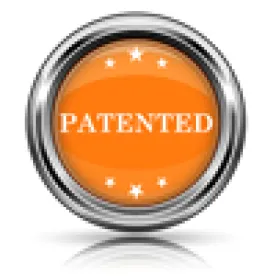This week in Tinnus Enterprises LLC v. Telebrands Corp. (Moore, Wallach and Stoll), the Federal Circuit upheld the grant of a preliminary injunction by the Eastern District of Texas, despite a PTAB Final Written Decision finding the claims at issue to be indefinite. While the petitioner’s failure to directly raise the PTAB’s grounds as a basis to deny the preliminary injunction may have partially contributed to the outcome, it also appears that the Federal Circuit will not always give deference to the PTAB when it disagrees with their findings.The case involved Tinnus’ U.S. Patent No. 9,051,066, on a water-balloon filling device designed to fill multiple water balloons as the same time. Tinnus sued Telebrands shortly after its patent issued and sought a preliminary injunction. Telebrands opposed the injunction on the basis that the asserted claims were indefinite and obvious. Telebrands also petitions for Post-Grant Review on the same grounds.
The District Court’s Grant of A Preliminary Injunction
At the district court, Telebrands argued that Tinnus was not likely to prevail on the merits because (among other reasons) the claims were obvious and the term “substantially filled” rendered the claims indefinite.
In an initial report and recommendation the E.D. Texas Magistrate Judge found that Tinnus was likely to succeed on the merits. The Magistrate Judge rejected Telebrands’ indefinitenes and obviousness arguments. Telebrands objected to various findings by the Magistrate Judge, but did not object to the Magistrate Judge’s ruling on indefiniteness or obviousness. The district court overruled all of Telebrands objections and entered a preliminary injunction.
The PGR Final Written Decisions
In the parallel proceeding, the PTAB instituted PGR, finding the claims likely to be indefinite and obvious on the same grounds Telebrands raised in district court. The PTAB subsequently issued a Final Written Decision finding that same claims asserted in the district court were unpatentable because the term “substantially filled” was indefinite. PGR2015-00018 (PTAB Dec. 30, 2016) (Final Written Decision).
The Federal Circuit’s Affirmance of the District Court
The Federal Circuit held that Telebrands failed to show clear error in any of the Magistrate Judge’s factual findings or legal determinations. In doing so, it applied the “plain error” standard to the Magistrate Judge’s finding that Telebrands’ indefiniteness argument failed to raise a substantial question of validity. The Court noted that Telebrands failed to object to this finding, and rejected Telebrands’ argument that its objection to certain claim constructions put the Magistrate Judge on notice that Telebrands was contesting the definiteness determination.
Turning to the merits, Telebrands’ argued that the term “substantially filled” is unclear because it equated the phrase “substantially filled” with being filled to a “desired size,” and thereby required a subjective determination. Notwithstanding the PTAB’s contrary decision, the Federal Circuit rejected this argument, agreeing instead with the district court that the claims themselves provide guidance as to the meaning of “substantially filled.” The Federal Circuit concluded that it found it “difficult to believe that [a person of ordinary skill] would be unable to determine with reasonable certainty when a water balloon is ‘substantially filled,’” and affirmed the district court’s determination that the claims were definite.
The Court largely ignored the PTAB’s contrary findings, stating:
We are aware that the PTAB issued a Final Written Decision on December 30, 2016, concluding that the claims of the ’066 patent are indefinite. The PTAB’s decision is not binding on this court, and based on the record before us and the applicable standard of review, it does not persuade us that the district court abused its discretion in granting the preliminary injunction. The parties are, of course, free to ask the district court to reconsider its preliminary injunction in light of the PTAB’s Decision
It’s Not Over Until It’s Over
This decision suggests that the Federal Circuit will not defer to PTAB findings that conflict with those of a district court. The appeals court’s observation that no person of ordinary skill would not know what “substantially filled” means in the context of the patent suggests that it believed that the Board’s institution decision and final written decision were simply wrong as to indefiniteness. On the other hand, court’s resolution of the apparent inconsistency between the district court and PTAB decisions appears to have been influenced by two factors.
First, the appeals court emphasized Telebrands’ failure to object to the indefiniteness determination of the Magistrate Judge, which resulted in a more onerous “plain error” review on appeal.
Second, the Board applied a different standard as to indefiniteness in its Final Written Decision than that applied by the district court. The district court applied the Nautilus standard: “[A] patent is invalid for indefiniteness if its claims, read in light of the specification delineating the patent, and the prosecution history, fail to inform, with reasonable certainty, those skilled in the art about the scope of the invention.” Nautilus, Inc. v. Biosig Instruments, Inc., 134 S. Ct. 2120, 2124 (2014). The Board, however, applied the standard set forth in the earlier In re Packard decision, holding that “a claim is indefinite when it contains words or phrases whose meaning is unclear.” 751 F.3d 1307, 1313 (Fed. Cir. 2014). The Board justified its application of Packard by saying that it does not understand Nautilus “to mandate the Board’s approach to indefiniteness in patent examination or reexamination matters or in AIA proceedings, in which the claims are interpreted under the broadest reasonable interpretation standard, and an opportunity to amend the claims is afforded.” The Board also cited to Judge Plager’s concurring opinion in Packard, which recognized that the standard set forth in Packard “may effectively result in a lower threshold for ambiguity than a Court’s determination.” Packard, 751 F.3d at 1323–24 (Plager, J., concurring).
Thus, the case illustrates that different legal standards applied by the Board may make it easier to demonstrate invalidity than in district court, even if both proceedings involve substantially the same issue. However, in view of the different applicable standards, a PTAB decision that is adverse to the patentee may not necessarily provide a shield for the defendant/petitioner in district court.




 />i
/>i

